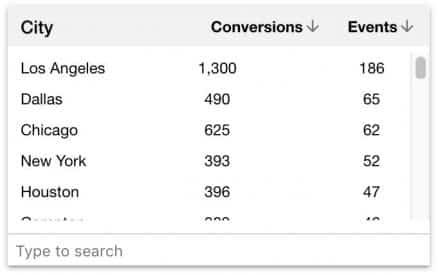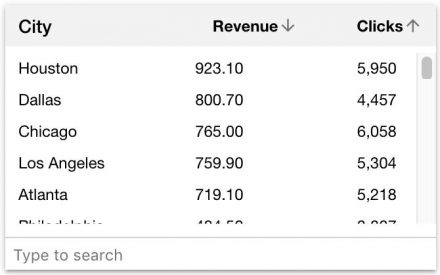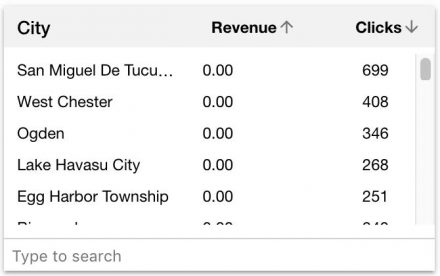This is an uncertain time for marketers. Apple and Mozilla have blocked third-party tracking in their browsers, and Google has announced plans to follow suit. What does this mean for the future of data-driven marketing? Will you have the tools to home in on your exact audience and to measure campaign success?
The answer is a resounding yes for a simple reason: Not all data stems from third-party cookies. For instance, ubiquitous and persistent, IP data is highly valuable to marketers, and can be leveraged to improve targeting, assess inventory quality (e.g. detect fraudulent impressions), drive campaign performance, and attribute business outcomes to specific channels.
And when used in conjunction with your first-party data or other privacy-compliant data sets, IP data provides rich profiles of users at a very granular level.
Here are seven tips for leveraging IP data to enhance your initiatives as we move forward into a privacy-centric world.
Tip #1: Make data a priority at your organization/build a data-driven culture
Data will always be the key to better understanding who your prospects and customers are, segmenting them into distinct personas, as well as gaining insight into their customer journeys.
IP data is especially helpful in improving targeting, attribution, and analysis while complying with existing and emerging privacy regulations. For instance, you can leverage IP addresses to uncover quite a bit of insight about your audiences, including their geolocation (country, city, postal code), whether they’re a home or business user, if their IP is associated with a suspicious proxy connection, their business name, and more.
These data points will help you ensure you’re targeting the right audience, as well as assess the markets that deliver the most success for your campaign and products.
Tip #2: Discuss your company’s objectives to determine the type of data you’ll need to meet them
The types of data you’ll need for your marketing initiatives and advertising campaigns will be driven by your company’s key objectives. For instance, if your goal is to verify that your advertising spend reached real humans and not bots, you’ll need to analyze geolocation data and other parameters so that you can detect fraudulent ad clicks. If your goal is to verify ad quality, you’ll need to audit ad clicks to ensure ads were served to the correct segment.
Specific datasets are available to help you hone a variety of use cases, from improving the customer experience with localized content, to better understanding the customer experience so you can refine your operations.
Tip #3: Examine which data you currently collect and integrate (or not) to identify gaps that need filling
Most companies have been building their pools of first-party data gathered from multiple customer touchpoints, including their websites, social media, campaign landing pages, customer care portal and so on. While these touchpoints provide a plethora of data, they don’t always provide the full context you need. If you’re not also leveraging IP data you will inevitably confront gaps in your insights, which can negatively affect your initiatives.
IP data enables you to:
- Gain detailed and nuanced insights that you can deploy to improve campaign metrics. For instance, you can target audiences by geolocation and other data to improve results. Let’s say you’re a brick-and-mortar store and your campaign goal is to drive in-store foot traffic. IP data lets you answer the question: what is the optimal distance from an outlet to encourage in-store visits by new customers?
- Create hyper-localized segments for targeting and analysis purposes. Based on real-time results, you can optimize your campaign criteria to drive conversions and efficiency in media spend (i.e. focus on the channels and day parts that deliver the highest engagement).
- Manage distribution of online content, ensuring that licensing and agreements are adhered to, and that the right customer or prospect is always presented with the right content.
These are just a few of the ways that IP data can be deployed; there are many others.
Tip #4: Determine breadth and depth of the datasets needed
IP data is highly varied and provides you with many options. The breadth and depth of the datasets you’ll need will be driven by your business needs. Some of your available options include:
| VPN & Proxy Identification | This data helps you to detect and prevent malicious IP address masking, and enables greater control over the distribution of your digital content. |
| Carrier Data | This data enables stronger targeting of mobile users based on ISP, mobile carrier, mobile country code, and mobile network code information. |
| Additional Insights from Extended Databases | These datasets provide a wealth of insight into users, and their likely interest in a product at a specific moment in time. For instance, a user may have little interest in a CPG product while at the office, but a keen interest while at home. These extended databases include:
|
| Location Data | Location data helps you make strategic decisions in the online world. For example, it affects the way you price and promote your products; it shapes the way you reach out to your target audiences; it is used to analyze the attributes of consumers within a particular area; and it places restrictions on the way you conduct business due to laws and regulations in a given area. |
Tip # 5: Evaluate whether or not you need to bring in a data partner
The best way to assess whether or not you need a data partner is to ask yourself very specific questions:
- Do you have access to the full range of data that you’ll need to:
- Deliver highly localized content
- Verify ad spend
- Optimize advertising yield
- Perform robust analytics
- Ensure legal compliance
- Prevent fraud and enhance security
- Network routing to optimize content delivery
- And more…
Does your team understand all of the use cases and potential applications of the data?
If you’ve answered no to any of these questions, it’s likely you will need a data partner.
Tip #6: Conduct due diligence on data partner in terms of data quality, accuracy, reliability, updates, customer support, and ease of deployment
The goal of due diligence is to whittle down potential vendors to consider. You can conduct quite a bit of your due diligence prior to contacting any vendors.
Ultimately, you want a partner who is an established industry leader, deploys unparalleled data collection practices, excellent methodologies for classifications, and has formed strategic partnerships with external or third-party data providers to enhance the data.
When conducting due diligence, ask:
- What industry firsts (i.e. innovations) can the company claim? You want a data provider that’s a pioneer in the industry, and can respond to emerging trends and opportunities in time to provide you with a competitive advantage.
- Do they hold patents? Patents are a sign that the company has a culture of innovation, and it means you’ll get access to high-quality, trusted data
- What is the breadth of the data? Is it global? Digital Element is the only provider that has accurate, global postcode-level coverage, as well as zip+4 in the U.S. The benefit of digital targeting is that it allows you to home in on your entire audience, but you can’t do that without access to accurate data on a global scale.
- Is this company the “gold standard” of its sector? You want to partner with the best quality, most forward-thinking data provider as you move forward in the privacy-centric world.
Tip #7: Vet vendors
At the end of your due diligence process you’ll have a list of vendors under consideration. Now it’s time to vet them so that you can make the best decision for your needs.
Proper vetting requires you to ask very specific questions, as the results of your initiatives will only be as good as the quality of the data you use.
Specific questions to ask include:
- How do you collect data? Is it anonymous and inherently privacy compliant? Do you collect PII data that must ultimately be scrubbed out? Do you store personal data?
- How often is your data refreshed? There’s no sense in targeting users who’ve already converted or sent signals they’re not interested in an advertised product or service. For this reason, Digital Element’s data is updated 24/7 and released weekly.
- How is your data validated?
- How accurate is your data in terms of percentage of audience?
- How easily can your data be deployed? Will my company be able to integrate it into our systems quickly and easily?
- Are you willing to collaborate with us? Answer questions for our clients?
The world of data is changing for marketers, but in many ways, it is changing for the better. With the right partner, and the right datasets, marketers can thrive and win new customers in the emerging privacy-centric environment.











